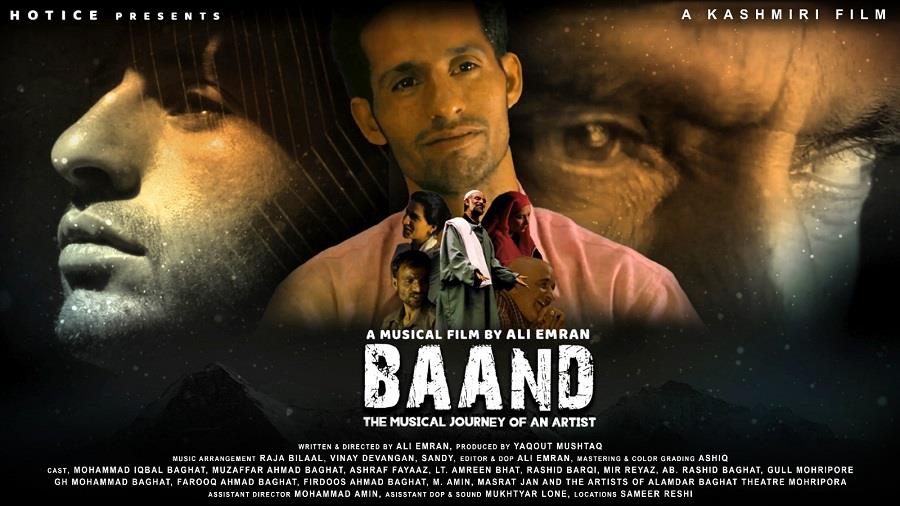Baand: Kashmir's Folk Theatre Finds Its Soul On Screen
Baand: The Musical Journey Of An Artist
The story begins in a small village in Kashmir, where Gani Bhagat, a dedicated folk theatre artist, prepares to take the stage for what may be his final performance. His son, Akhtar, stands in the shadows, torn between ambition and obligation.
This is Baand, a musical journey directed by Ali Emran that offers a profound reflection on cultural survival.
Baand-e-Pather, the centuries-old folk theatre form, has long been a vessel of collective storytelling in Kashmir, performed in the open fields and village squares.
Once a thriving medium that united communities through song, dance, and drama, the tradition now teeters on the edge of extinction.
Emran's film doesn't sentimentalize this decline. It presents it with sober honesty.
The story of Gani and Akhtar stands for an entire generation of artists grappling with irrelevance in a world racing toward digital screens and city lights.
What makes Baand stand out is its raw authenticity.
Emran cast real folk performers instead of professional actors, allowing their lived experience to permeate the screen. The performances feel effortless, grounded in decades of tradition.
Gani's rough hands, the tired faces of the baands, and the slow, steady way they speak bring life to a world often ignored by mainstream cinema.
The narrative unfolds deliberately, resisting the temptation of melodrama. Instead, it leans into subtle tension.
Akhtar's ambivalence toward his father's legacy unfolds gradually. Early in the film, he is restless, frustrated by the community's fading respect for their ancient art. As the story progresses, his internal conflict sharpens. Watching his father perform, frail yet determined, stirs something he cannot ignore.
The final scene, where Gani dies mid-performance, serves as a heartbreaking culmination, a surrender and an awakening all at once.
Music, woven seamlessly into the narrative, acts as the film's heartbeat. Traditional Kashmiri folk tunes mingle with understated modern compositions, capturing the valley's melancholy and resilience. Each song feels carefully placed, reflecting the tension between past and present.
The film's sound design is meticulous, capturing the crisp rustle of paper scripts, the echo of ancient instruments, and the murmur of an audience struggling to stay engaged.
Visually, Baand is an ode to Kashmir's rugged beauty. The camera lingers on expansive meadows, mist-laden mountains, and dilapidated village stages. These are not picturesque backdrops but characters in their own right, silent witnesses to the unfolding drama.
The cinematography avoids flashy techniques, opting instead for natural light and steady framing, creating an atmosphere that feels both intimate and epic.
Ali Emran's signature philosophical depth anchors the film. His direction observes. He understands that the tension between tradition and modernity is a slow, inevitable transformation.
Baand suggests that the future of folk theatre lies in adaptation, not preservation. The film ends with a tentative hope: Akhtar's decision to carry forward the tradition signals both personal reconciliation and cultural resilience.

Legal Disclaimer:
MENAFN provides the
information “as is” without warranty of any kind. We do not accept
any responsibility or liability for the accuracy, content, images,
videos, licenses, completeness, legality, or reliability of the information
contained in this article. If you have any complaints or copyright
issues related to this article, kindly contact the provider above.
Most popular stories
Market Research

- Japan Buy Now Pay Later Market Size To Surpass USD 145.5 Billion By 2033 CAGR Of 22.23%
- BTCC Summer Festival 2025 Unites Japan's Web3 Community
- GCL Subsidiary, 2Game Digital, Partners With Kucoin Pay To Accept Secure Crypto Payments In Real Time
- Smart Indoor Gardens Market Growth: Size, Trends, And Forecast 20252033
- Nutritional Bar Market Size To Expand At A CAGR Of 3.5% During 2025-2033
- Pluscapital Advisor Empowers Traders To Master Global Markets Around The Clock






















Comments
No comment